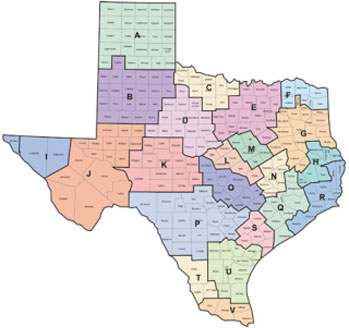
In 1992 the Texas Board of Health divided the state into 22 regions called "trauma service areas." A regional advisory council ("RAC") was formed in each region to develop and implement the trauma system for that region. Since no funding was available when the program was implemented, these councils were formed and the work was done by dedicated volunteers in various medical professions. Our goal is to fully implement the statewide trauma system in order to reduce the number of trauma incidents, preventable deaths, and reduce the severity of trauma-related disability, and to make sure that all Texas trauma victims receive the best care possible. For the past few years, we have also been helping hospitals make sure they are prepared to respond to a bioterrorism attack or a wide-scale natural disaster.
Approved Classes and Conferences
The Texas "J" Regional Advisory Council ("J" RAC) is an organization of local citizens representing all health care entities within Texas Trauma Service Area "J" (TSA "J"). The "J" RAC was chartered by the Texas Department of Health Bureau of Emergency Management to develop, implement, and monitor regional emergency services and to oversee trauma system networking. 17 counties are included in TSA "J". Participant volunteers are hospitals, physicians, nurses, emergency medical service (EMS) providers, and other individuals interested in trauma care.
The TXJRAC Concern form is a way for entities to resolve an issue with another entity or just get concerns answered. The form when completed is sent back to the TXJRAC Executive Director then forwarded to the other entity involved for an answer. This is continued until resolution is complete. It remains between the entities and the TXJRAC Executive Director unless outside expertise is required to resolve the issue.


